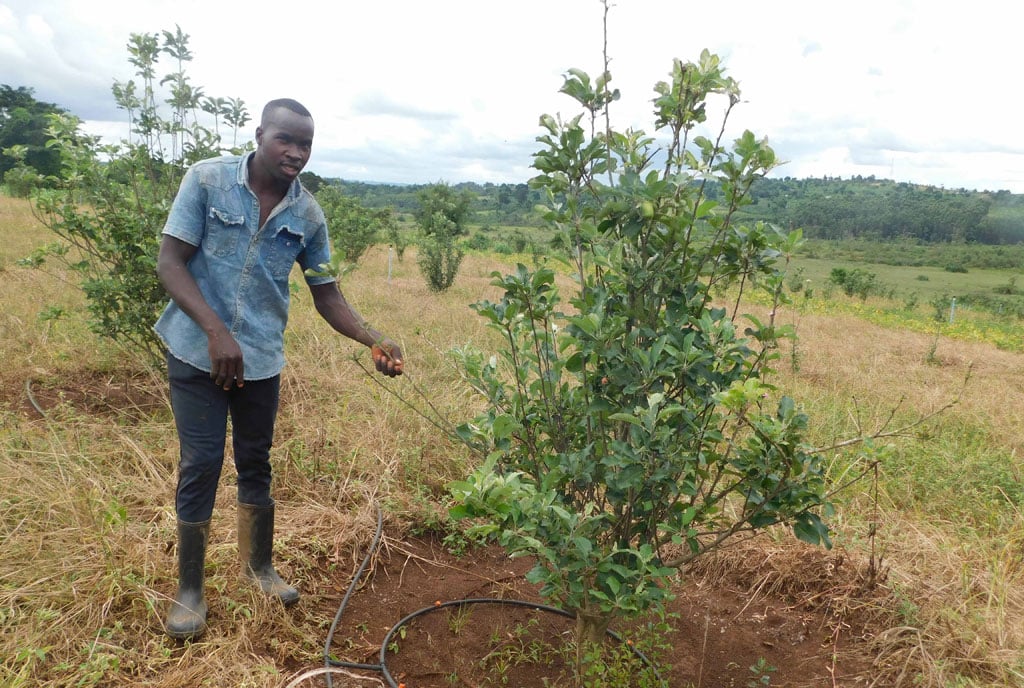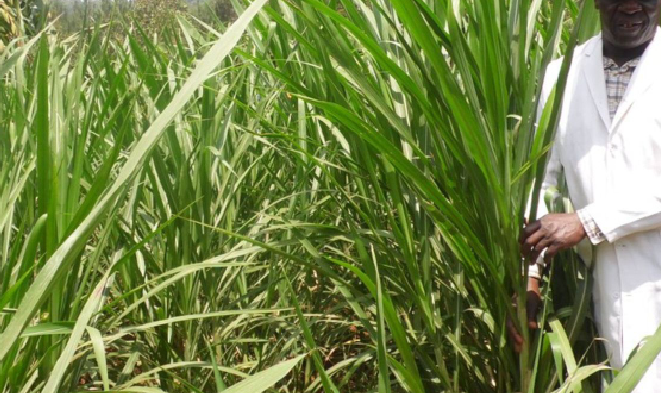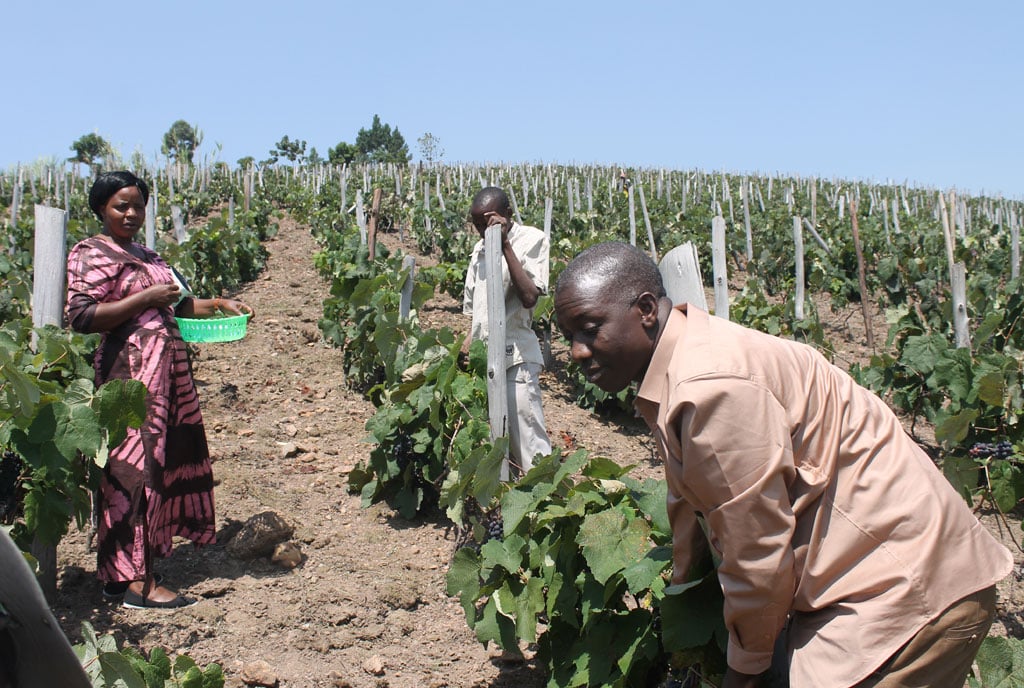Prime
Ajuna mints cash from apples

Ajuna says that for apple farmers drip irrigation is necessary in drought conditions to avoid fruit abortion. (Michael J Ssali)
What you need to know:
- Apple farming has spread across the entire country and more than three million seedlings have been distributed since 2014, according to figures from Uganda Bureau of Statistics.
Apple production started in Uganda in 1999 following initiation trials in the highlands of South-Western Uganda carried out by Forestry Resources Research Institute (FORRI) and Kawanda Agricultural Research Institute (KARI), according to a 2012 study report, titled “Social Economic Factors Affecting Apple Production in South Western Uganda” by PR Ntakyo, J Mugisha, and G Elepu.
Apples are a temperate climate fruit that grow best in agro-climatic conditions suitable for apple production, such as Kabale, Kisoro, Bushenyi, Kabarole, and Kapchorwa.
However, over the recent years other regions such as Mount Elgon and the Rwenzori mountains have been discovered to be suitable for apple production.
Apple farming
Apple farming has spread across the entire country and more than three million seedlings have been distributed since 2014, according to figures from Uganda Bureau of Statistics. An estimated 100,000 households have taken up apple growing mainly as a way of diversifying their sources of income.
Many farmers in the Central Region have taken up apple growing as an alternative economic activity to coffee production.
According to Godfrey Kame Ajuna, Agro-forestry Technician at Mukono Zonal Agricultural Research Development Institute (MUZARDI) Kamenyamiggo Satellite, many farmers in the Masaka Region are into apple farming.
“I know farmers growing the crop in Rakai, Masaka, Lwengo, and Kyotera districts that I have assisted to start gardens,” he told Seeds of Gold at Kamenyamiggo recently as he worked in the institute’s demonstration garden.
“There are yet very many others that have made some seedling orders to plant in their compounds just for ornamental purposes and for their domestic eating. Apples are not just a cash crop but they are sweet highly nutritious fruits which should be part of the diet in every home.”
Training
Apples are slowly getting introduced to Tropical African weather conditions. However, all farmers ought to seek some training in apple production since it is a new crop in our rather harsh climatic conditions.
In regions which experience winter, trees drop their leaves and since the apple is basically a foreign crop in the tropics the farmers here must be taught to physically remove the leaves from the apple plant during particular months of the year (defoliation).
At Kamenyamiggo, Ajuna is in charge of the apples demonstration gardens and he is also responsible for passing on apple farming skills to farmers.
One of the gardens measuring perhaps an acre is under drip irrigation while some two others are not.
How to grow apples
He says for anyone planning to grow apples it is important to dig holes, two feet deep and two feet by two feet wide.
“The farmer should then cover up the holes with surface soil well mixed with organic manure several weeks before the rainy season,” he says.
“Planting of the apple seedlings should take place at the beginning of the rains.”
Ajuna further says the seedling should be at least 15 centimetres from the ground to the grafting point and the farmer should remember to remove the grafting tape at the time of planting.
When to prune
He also said that all branches that may develop below the grafting point must be removed. At around the age of one year, the growing tip should be removed and the branches should be bent as horizontal as possible to ensure that the buds are exposed to sunlight.
He said this encourages development of branches and a wide crown. The farmer should seek regular guidance from the area agricultural extension officer or from National Agricultural Research Organisation (Naro) on what steps to take at every stage including how to tie the young branches, when to prune and how to carry out defoliation.
Irrigation
There ought to be a component for irrigation (may be with mineral water bottles) and regular application of organic manure to avoid fruit abortion. Ajuna says organic manure may be applied by burying it around the root area shortly before each rain season. He advocates mulching around the tree to sustain soil moisture and to reduce the risk of water runoff and to suppress weeds as well as to improve soil fertility.
Since growing apples is quite new in Uganda as compared to other crops, farmers need some training before they go into commercial production of the crop.
Quality seedlings
As Ajuna said, it is important for the intending farmer to order quality clean grafted pest and disease tolerant seedlings only obtainable through Kamenyamiggo for farmers within Masaka region. Other intending farmers in the different parts of the country are advised to approach agricultural research institutes under Naro for assistance to get the right seedlings.
Ajuna believes that apple production can be very paying to the farmer. “After planting it takes about two years for the tree to bear fruits.
On the average, trees of two years may produce some one hundred to two hundred fruits. One apple is sold at between Shs500 and Shs2,000 or even more in public markets. In one acre it is possible to plant about 400 apple trees if spacing of the trees is done at about three metres between trees.
Maturity
At around four years, with good agronomic practices, some apple varieties such as James Grieve may produce as many as one thousand fruits. For the others like Anna and Golden Dorset it may be possible to harvest up to six hundred fruits or even more.”
Ajuna disclosed that apples are harvested two times a year which should make them one of the most suitable crops for poverty alleviation and nutrition promotion.
Challenges
However the farmer is likely to worry constantly about thieves of the fruit. Ajuna actually describes the thieves as “human pests” and a problem which can be mitigated by construction of strong fences all around the garden.
Other farmers’ worries include Root Rot, a disease, which presents in drying of the root system leading to the death of the entire plant. As soon as the symptoms are noticed the farmer can try Copper based fungicides which he can apply around the affected roots. The solution should be four tablespoons in five litres of water.
The other common worry is Apple Canker which causes drying of branches, stems, and fruit spurs. Cutting off affected parts and application of Copper based fungicides is quite preventive.
Ajuna says that apples can be harvested some five or six months after flowering. It is one of the reasons why apple farmers should keep accurate records of all their activities. Harvested apples must be hygienically handled and stored in cold conditions. It is possible to make juice and other products out of apples.
Key facts
According to PR Ntakyo, J Mugisha, and G Elepu (Social Economic Factors Affecting Apple Production in Southwestern Uganda) China, which produces 41 percent of the fruit, leads the world in apple production, followed by the USA, India, and Turkey. In Africa, South Africa is the leading apple producer followed by Egypt and Kenya.
According to the Food and Agriculture Organisation (FAO) apple production in East Africa has not had a stable trend, having increased from 16 tonnes in 2002 to 21 tonnes in 2005 and then reduced by 36 percent to 13.4 tonnes in 2011.
Guidance
The farmer should seek regular guidance from the area agricultural extension officer or from Naro on what steps to take at every stage including how to tie the young branches, when to prune and how to carry out defoliation.
Key facts.
According to PR Ntakyo, J Mugisha, and G Elepu (Social Economic Factors Affecting Apple Production in South Western Uganda) China, which produces 41 percent of the fruit, leads the world in apple production, followed by the USA, India, and Turkey.




